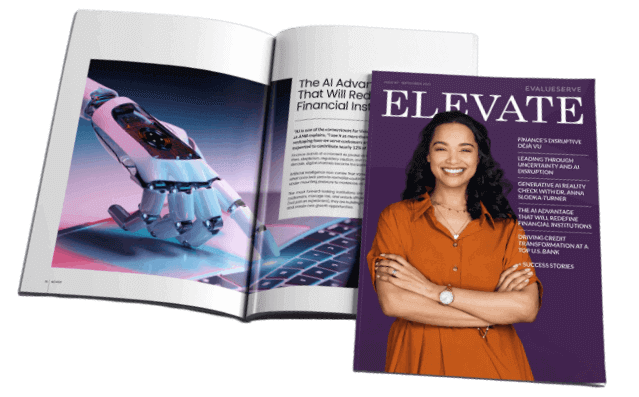In today’s business environment, where AI models can generate insights within milliseconds, a critical question arises: What role does human intelligence continue to play? Competitive intelligence has always emphasized speed and accuracy, as timely and reliable insights provide organizations with a strategic advantage and help reduce decision-making risk. The emergence of AI has redefined the concept of speed by enabling the processing of millions of data points almost instantly. However, speed alone does not guarantee strategic clarity.
Organizations now face a dual challenge: scaling insights through AI while applying human judgment to ensure relevance, ethical alignment, and effective prioritization. This blog explores why efficiency and thoroughness should not be viewed as opposing goals. Instead, they are complementary strengths. A hybrid approach that combines machine-driven efficiency with human insight is essential for producing intelligence that is not only fast but also actionable.
High Adoption, Low Maturity: The Current State of AI in Competitive Intelligence
AI has significantly expanded the scale and speed of competitive intelligence, enabling organizations to monitor more sources than ever and uncover patterns that would be impossible to detect manually. According to the Competitive Intelligence Alliance, as of 2024, approximately 60% of CI teams used AI tools daily, marking a 76% year-over-year increase in adoption.
AI delivers the greatest impact in several key areas:
Data Scale and Speed
AI processes millions of documents efficiently and without fatigue, helping analysts identify broader signals more quickly.
Consistency
Machine learning models apply predefined rules uniformly across datasets, eliminating individual bias and variation in flagging.
Pattern Recognition
AI identifies anomalies and trends in unstructured data, such as sudden spikes in product reviews or keyword frequency, faster than human analysts can.
While AI adoption in competitive intelligence is widespread, maturity remains low. Only a small percentage of organizations report having fully scaled AI across their workflows. For example, a McKinsey survey found that although nearly every company now uses AI in at least one business function, only 1% describe their generative AI programs as fully mature.
This gap exists because technology still faces several limitations:
Context and Judgment
AI may detect a product launch, but it cannot inherently assess whether the product poses a competitive threat or aligns with a strategic roadmap.
Nuanced Interpretation
A single tweet could signal a PR crisis or simply be sarcasm. Humans interpret tone and nuance in ways machines still struggle to replicate.
Prioritization
Not every signal warrants a response. Human analysts prioritize based on organizational goals, competitor behavior history, and market context.
Misclassification and Noise
AI can hallucinate connections or misclassify tone, introducing false positives into the analysis.
Lack of Ethical Framing
AI does not evaluate reputational, legal, or ethical implications, humans do.
Why Human Judgment Remains the Cornerstone of Competitive Intelligence
While AI excels at sifting through vast volumes of data, without human validation, that data risks becoming noise rather than actionable intelligence. This gap is especially evident in regulated or high-stakes industries such as pharmaceuticals, where human interpretation is essential to contextualize signals accurately.
Industry commentary from Proactive Worldwide and BiopharmaVantage underscores this point. AI may summarize clinical trial data or regulatory updates, but only experienced analysts can interpret the operational or strategic implications within context-sensitive environments. These insights reinforce a fundamental truth: human judgment is not just valuable; it is essential to the success of any competitive intelligence program.
The most effective competitive intelligence programs use AI to cast a wide net, but rely on human expertise to refine, prioritize, and interpret the findings. Human analysts transform raw information into actionable insight by contextualizing AI-generated outputs with real-world knowledge of market dynamics, brand positioning, and organizational goals.
For instance, AI might identify a sudden increase in hiring within a competitor’s design team. A human analyst interprets this not merely as a hiring trend but as a potential signal that the company is preparing for a product refresh or repositioning.
What Hybrid Competitive Intelligence Looks Like in Practice
In real-world applications, hybrid competitive intelligence combines the scale and automation of AI tools with the interpretive expertise of human analysts. The typical workflow includes the following steps:
Step 1
AI tools scan the web for early signals and generate large volumes of alerts.
Step 2
These signals are filtered, often using natural language processing, to eliminate irrelevant or low-value data.
Step 3
Human analysts score and validate the remaining signals, mapping them to internal impact, competitive threats, and strategic opportunities.
Step 4
The curated insights are compiled into executive dashboards and market updates, providing actionable intelligence to support decision-making.

Why Insightsfirst Is Built for This Future
At Evalueserve, we believe competitive intelligence delivers the greatest value when AI enhances, rather than replaces, human analysts. That’s why Insightsfirst, our proprietary CI platform, is built on a hybrid model that integrates:
- AI-powered signal detection and clustering
- Human-in-the-loop validation and enrichment
- Customizable delivery formats for real-time, audience-ready insights
With Insightsfirst, the core principles of competitive intelligence remain unchanged: critical thinking, business alignment, and strategic judgment. Even as the platform evolves, this approach ensures that clients receive not only faster intelligence but also more meaningful insights that drive results.
The Power of Human-AI Synergy
The future of competitive intelligence is not about choosing between AI and human expertise. It is about elevating both. To make smarter decisions, organizations need machines that scale effort and people who know what truly matters. In this hybrid future, human intelligence is not diminished, it is indispensable.
Talk to One of Our Experts
Get in touch today to find out about how Evalueserve can help you improve your processes, making you better, faster and more efficient.




